Hydrocephalus is a condition where excess fluid builds up in the brain, causing pressure that can damage brain tissue. This condition can affect children of all ages, from newborns to older kids. Early diagnosis and treatment are crucial to prevent long-term complications. In this guide, we’ll walk you through the symptoms, diagnostic process, and treatment options for hydrocephalus in children.
What is Hydrocephalus in Children?
Hydrocephalus occurs when there is an imbalance between the production and absorption of cerebrospinal fluid (CSF), leading to fluid buildup in the brain’s ventricles. This results in increased pressure on the brain, which can cause developmental issues, brain damage, or other complications.
Causes of Hydrocephalus
Hydrocephalus can develop due to:
- Congenital Causes: Conditions like spina bifida, aqueductal stenosis, or genetic abnormalities that disrupt CSF flow.
- Acquired Causes: Brain infections (e.g., meningitis), head trauma, or tumors.
- Premature Birth: Premature infants may develop hydrocephalus due to intraventricular hemorrhage (bleeding in the brain).
Signs and Symptoms of Hydrocephalus in Children
Recognizing the symptoms of hydrocephalus early is essential for effective treatment. Symptoms can vary depending on the child’s age:
- Infants
- Rapid head growth
- Bulging soft spot (fontanel)
- Irritability
- Vomiting
- Poor feeding
- Seizures
- Older Children
- Headaches
- Nausea
- Blurred vision
- Balance problems
- Cognitive delays
- Difficulty with coordination
If your child is experiencing any of these symptoms, consult a healthcare provider immediately.
Read More Blogs: How to Cope With a Child’s Diagnosis of Pediatric Hydrocephalus?
Step-by-Step Diagnosis of Hydrocephalus in Children
Diagnosing hydrocephalus involves several steps to confirm the condition and assess its severity.
Step 1: Initial Evaluation
The diagnostic process begins with a detailed medical history and physical examination. The doctor will ask about:
- The child’s symptoms and when they began.
- Medical history, including any previous neurological conditions or injuries.
- Family history of hydrocephalus or related conditions.
Step 2: Physical Exam and Observation
The doctor will examine the child for signs of abnormal head growth, especially in infants. This may include:
- Measuring head circumference.
- Checking for a bulging fontanel (in infants).
- Observing behavioral changes or unusual eye movements that could indicate increased brain pressure.
Step 3: Imaging Tests
If hydrocephalus is suspected, imaging tests are typically performed to confirm the diagnosis. These include:
- Ultrasound: Commonly used for infants under six months. It provides initial insights into fluid buildup.
- CT Scan (Computed Tomography): Offers cross-sectional images of the brain to identify fluid accumulation.
- MRI (Magnetic Resonance Imaging): Provides detailed images of the brain and is often the preferred method for assessing the severity of hydrocephalus.
Step 4: Evaluation of Cerebrospinal Fluid (CSF)
In certain cases, a lumbar puncture (spinal tap) may be performed to analyze the CSF. This test helps detect infections or other abnormalities contributing to the symptoms.
Step 5: Neurological Assessment
Doctors may perform neurological exams to evaluate the child’s:
- Cognitive function.
- Reflexes.
- Sensory responses.
- Coordination and balance.
These tests help assess how hydrocephalus is affecting brain function and guide treatment planning.
Step 6: Monitoring and Follow-Up
Once diagnosed, children with hydrocephalus require regular monitoring. Follow-up visits help ensure the treatment is effective and check for any changes in symptoms or brain pressure.
How is Hydrocephalus Treated?
Treatment for hydrocephalus focuses on relieving pressure on the brain and managing CSF flow. Common procedures include:
- Shunt Surgery: A shunt (a flexible tube) is inserted to redirect excess CSF to another part of the body, such as the abdomen, where it can be absorbed.
- Shunt Maintenance: Shunts often need revisions or replacements as the child grows.
- Complications: Shunts may become blocked or infected, requiring prompt medical attention.
- Endoscopic Third Ventriculostomy (ETV): This procedure creates a new pathway for CSF to flow within the brain, bypassing the blockage. It is an alternative to shunt placement in some cases.
- Long-Term Care: Children with hydrocephalus require lifelong monitoring to ensure the condition remains under control and to address any complications promptly.
If your child is showing symptoms of hydrocephalus, consult a pediatric neurologist and pediatric neurosurgeon immediately. Early diagnosis and treatment can make a significant difference. For trusted care, visit NJPNI or contact us to schedule a consultation.
Frequently Asked Questions
-
Can hydrocephalus be cured?
Answer: Hydrocephalus cannot be cured, but treatments like shunts and ETV can effectively manage the condition. Lifelong monitoring is essential.
-
Is hydrocephalus common in children?
Answer: Hydrocephalus affects about 1 in 1,000 children. Early diagnosis improves outcomes significantly.
-
What happens if hydrocephalus is untreated?
Answer: Untreated hydrocephalus can cause severe brain damage, developmental delays, or even be life-threatening.


